Why Natural Solutions Beat Harsh Chemicals
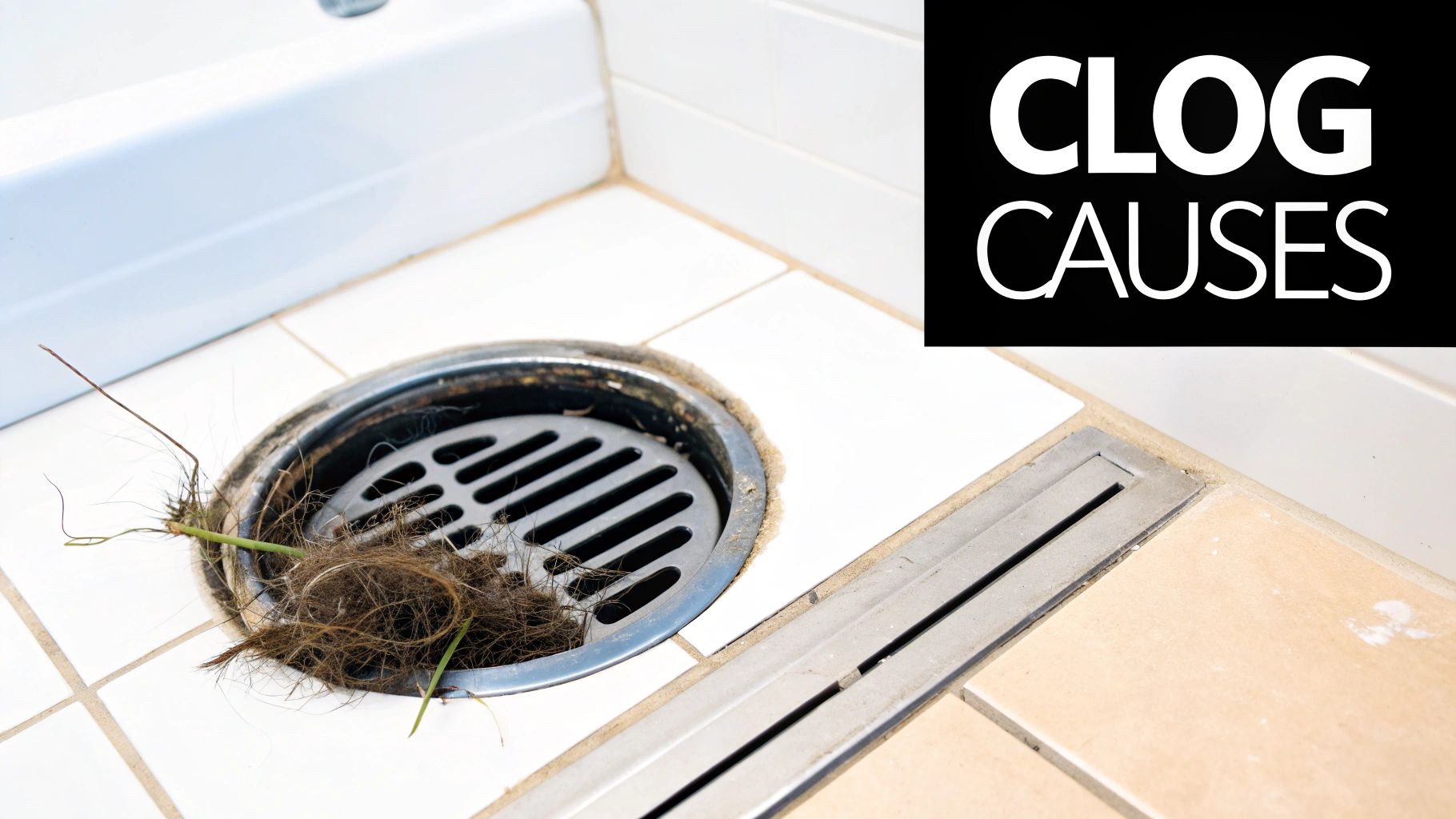
That bottle of chemical drain cleaner under your sink might seem like a quick fix for a clogged shower drain. However, it comes with hidden costs. These harsh chemicals are effective in the short term, but they can damage your plumbing system.
The corrosive nature of these cleaners can damage pipes over time. This can lead to leaks and the need for premature pipe replacement. Ultimately, relying on chemical solutions may cost you more money in the long run.
These chemicals also pose risks to your family’s health and the environment. The fumes can irritate your eyes, skin, and lungs. Improper handling can even lead to chemical burns. Furthermore, these chemicals eventually enter our waterways, which harms aquatic life and ecosystems. Considering these potential hazards, exploring natural solutions for unclogging your shower drain is a responsible and proactive choice.
The Growing Popularity of Natural Drain Cleaning
Natural methods are gaining popularity as a safe and effective way to unclog shower drains. These methods often use common household items like baking soda and vinegar. They offer a gentler approach to drain cleaning than harsh chemical solutions.
Growing awareness of environmental and health concerns has fueled this shift towards natural solutions. The global drain cleaner and disinfectant market reflects this increasing demand for sustainable options. As of 2022, this market was valued at USD 2,007.12 million.
It's projected to reach USD 3,230.13 billion by 2031. A significant portion of the commercial market, 63.9%, actively seeks eco-friendly alternatives. These alternatives won't damage plumbing or the environment. This growing demand highlights the effectiveness and viability of natural methods. Learn more about this growing market at Straits Research.
The Benefits of Natural Drain Cleaning
Choosing natural solutions offers several advantages:
- Protecting your pipes: Natural methods avoid the corrosive damage of chemical cleaners, extending the lifespan of your plumbing.
- Safeguarding your health: They eliminate exposure to harsh fumes and the risk of burns, creating a safer home.
- Preserving the environment: Natural solutions are biodegradable and don't pollute waterways, contributing to a healthier planet.
- Cost-effective: Many natural solutions use common household products, making them an affordable option.
By opting for natural drain cleaning, you address the immediate clog while investing in the long-term health of your plumbing, family, and the environment. This approach emphasizes both effectiveness and sustainability. It proves that you don’t need harsh chemicals for a clear and functioning drain.
Understanding What's Really Clogging Your Drain
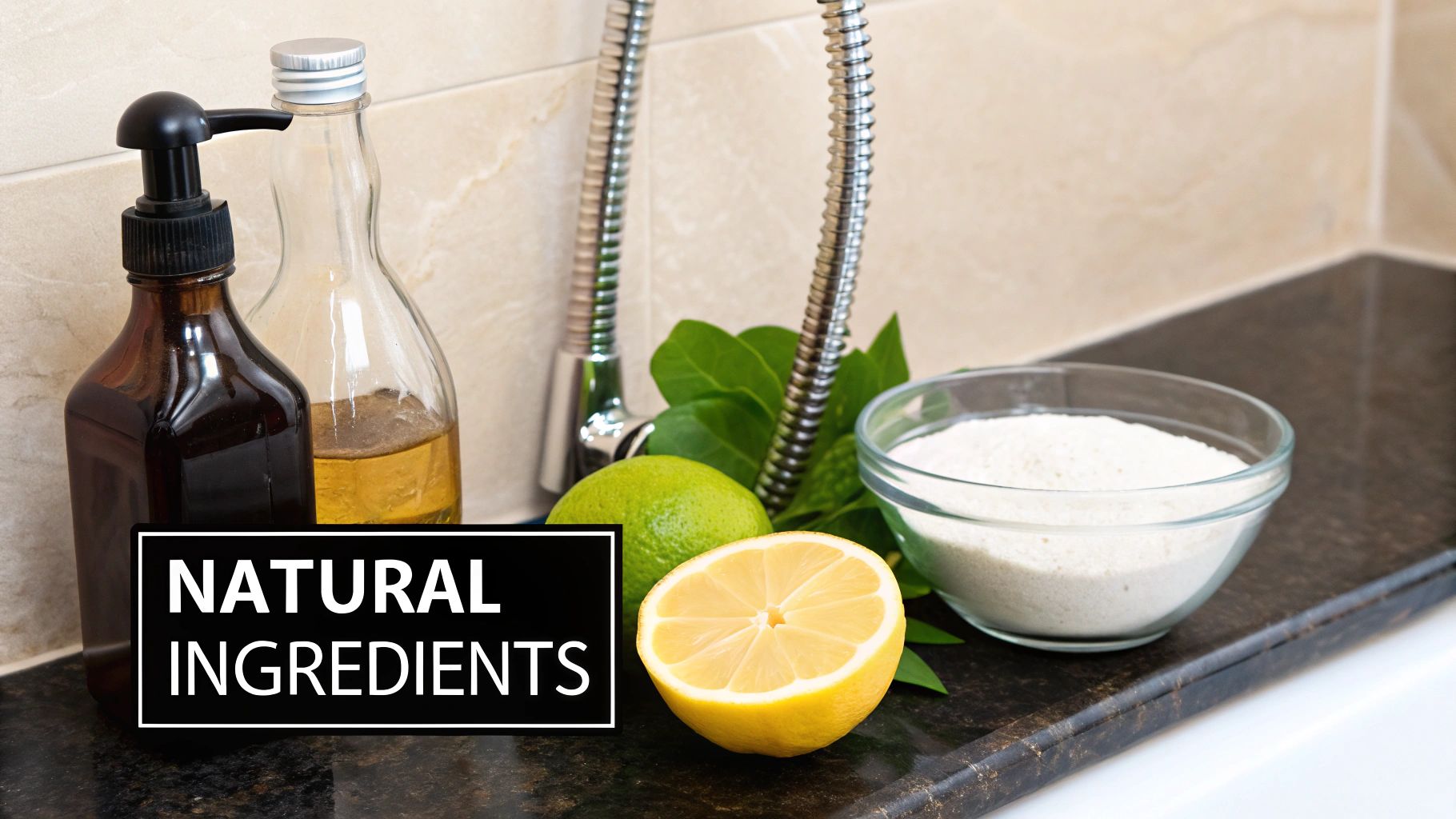
Before tackling a clogged shower drain with natural methods, it's helpful to understand the cause of the blockage. This knowledge allows you to select the right natural solution, as a generic approach may not be effective for every clog.
Common Culprits Behind Shower Drain Clogs
Several common issues contribute to shower drain clogs. Here are some of the most frequent offenders:
-
Hair: This is the most common culprit. Hair easily becomes trapped in drains, accumulating and combining with other debris to form a stubborn clog.
-
Soap Residue: Soap doesn't always fully dissolve. The sticky residue it leaves behind clings to pipes, contributing to clogs over time.
-
Mineral Deposits: If you have hard water, mineral buildup can restrict water flow and lead to clogs. These deposits accumulate inside your pipes, gradually narrowing the passage.
-
Personal Care Products: Lotions, conditioners, and other personal care products can add to the sticky buildup in your drain, exacerbating the clog.
The Role of Water Quality
Water quality significantly impacts drain clogs. Hard water, containing high levels of minerals like calcium and magnesium, leaves deposits in pipes. This buildup restricts water flow and provides a sticky surface for hair and soap scum to adhere to. If you see white or chalky residue around your faucets, you likely have hard water, a major contributor to drain clogs. Homeowners in hard water areas may need to use natural unclogging methods more frequently. A water softener can help prevent these mineral deposits.
Clogged drains are a global issue, primarily due to the buildup of hair, soap, and debris. In the US, this problem contributes to some Hospital-Acquired Infections (HAIs), impacting approximately 1.7 million people each year. Simple preventative measures like hair catchers can significantly reduce clog occurrences by up to 90%. Learn more about drain clogs and solutions at Liquid Rhyno. For more plumbing tips, you can explore resources like How to master your plumbing.
Identifying Your Clog Type
Understanding your clog type will guide your approach. A slow-draining shower may indicate a buildup of soap scum and hair, while a completely blocked drain suggests a more substantial obstruction. Standing water in your shower is a clear sign of a complete blockage. This distinction helps you choose the most effective natural unclogging method for your specific situation, saving you time and effort.
The Baking Soda & Vinegar Magic Formula
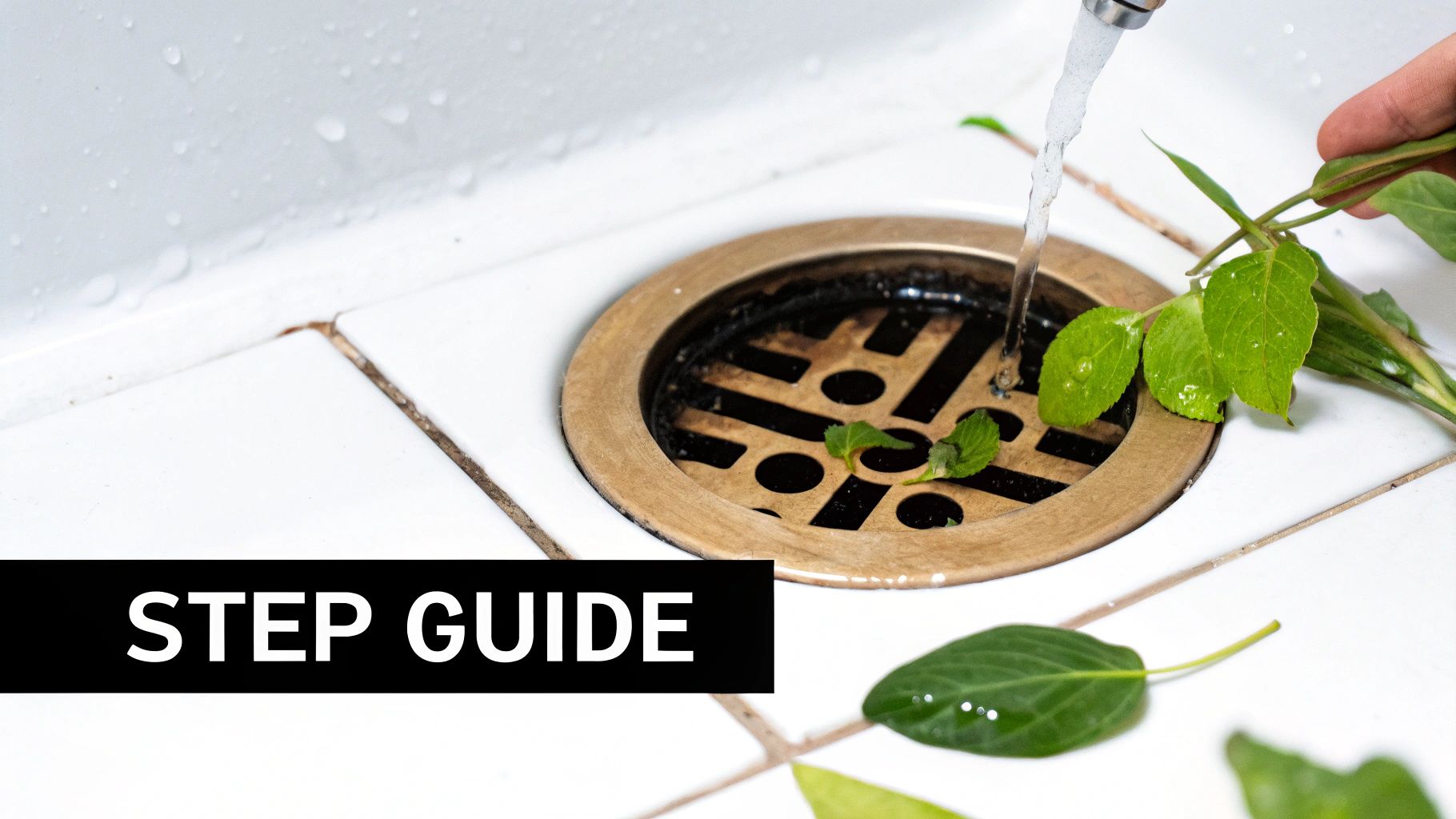
This dynamic duo, likely already in your kitchen, offers a powerful natural drain cleaning solution. This simple method tackles even stubborn shower clogs and has been a homeowner favorite for decades. But how does this combination work?
The Science Behind the Fizz
The effectiveness of baking soda and vinegar comes down to a chemical reaction. Baking soda (sodium bicarbonate) is a base, while vinegar (acetic acid) is an acid. Combining them creates carbon dioxide gas.
This fizzing action loosens hair, soap scum, and other debris inside your shower drain. Hot water then flushes away the loosened gunk.
Step-by-Step Guide to Unclogging Your Drain Naturally
You'll need three household items:
- 1 cup of baking soda: The base for the reaction.
- 1 cup of vinegar: The acid that triggers the fizz.
- Hot water: Essential for flushing.
Here’s how to use them:
- Pour the baking soda down the drain.
- Follow with the vinegar. The fizzing shows it's working.
- Let it sit for 30 minutes, or up to an hour for tough clogs.
- Flush with hot water.
This process often avoids harsh chemicals or a plumber. Using baking soda and vinegar is a highly effective natural method for unclogging shower drains. It's popular due to its non-invasive and eco-friendly approach.
This method can clear up to 80% of simple clogs, according to various sources. By 2022, about 75% of North American households used baking soda for cleaning. Learn more at Mr. Rooter Plumbing.
To help illustrate different approaches, let's look at the following table:
Baking Soda & Vinegar Method Variations
| Variation | Ingredients | Wait Time | Best For | Success Rate |
|---|---|---|---|---|
| Basic Method | 1 cup baking soda, 1 cup vinegar | 30 minutes | Minor clogs | 80% |
| Overnight Soak | 1 cup baking soda, 1 cup vinegar | Overnight | Stubborn clogs | 90% |
| Plunger Boost | 1 cup baking soda, 1 cup vinegar, plunger | 30 minutes + plunging | Tough clogs, slow drains | 95% |
This table summarizes the effectiveness of different variations on the baking soda and vinegar method. As you can see, adding a plunger or letting the mixture sit overnight can significantly improve the success rate for more difficult clogs.
Boosting the Effectiveness: Hot Water is Key
While the baking soda and vinegar loosen debris, hot water is key for a complete clear-out. It melts soap scum and grease, flushing dislodged material. Boiling water is ideal.
Troubleshooting Tips
Repeat the process if needed. For stubborn blockages, let the mixture sit overnight. A plunger after the hot water flush can further dislodge debris. Combining these methods often solves the problem completely, ensuring your drain flows freely.
Beyond Baking Soda: Natural Alternatives That Work
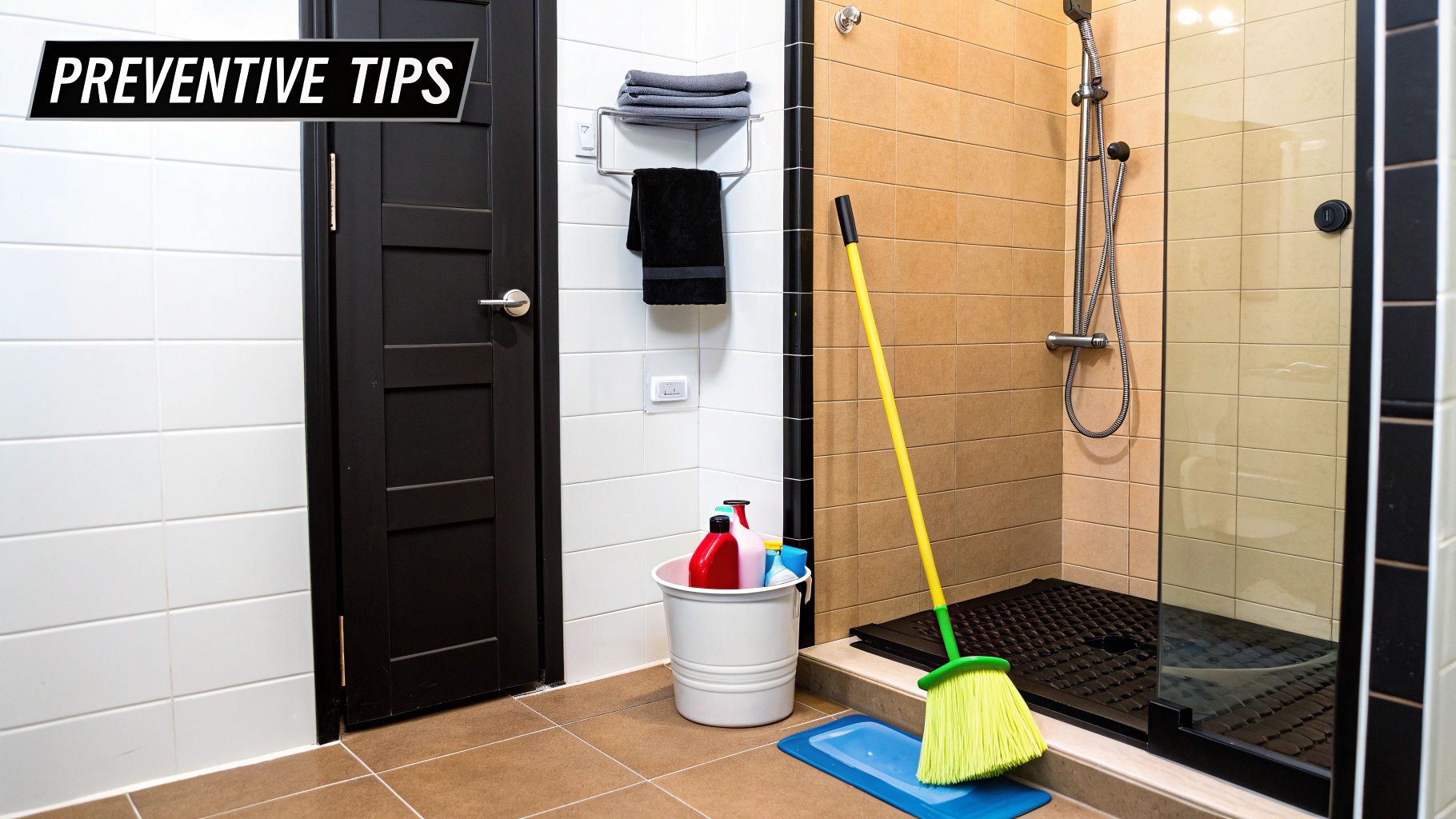
While the baking soda and vinegar combination is a popular choice for unclogging shower drains, it isn't the only natural solution. Several other readily available household items can effectively tackle these blockages, offering additional tools for addressing various clog types.
Harnessing The Power of Boiling Water, Salt, and Dish Soap
Boiling water is a simple yet surprisingly effective method for clearing minor clogs caused by soap scum or grease. The high temperature melts these substances, allowing them to flush away easily.
Pouring a kettle of boiling water down the drain once a week can help maintain a clear drain and prevent more stubborn clogs from forming later. This simple preventative measure can save you time and effort in the long run.
Salt, combined with boiling water, acts as a natural abrasive, dislodging debris clinging to pipe walls. It also has antibacterial properties, helping to eliminate odor-causing bacteria and making it an excellent choice for addressing smelly drains.
Dish soap helps break down grease and soap scum. A few squirts followed by boiling water can be surprisingly effective for minor clogs. This is a great first-line approach for slow-draining showers.
For more stubborn blockages, however, you might need a stronger natural solution. You might be interested in our product list for more plumbing solutions.
The Science of Enzymatic Cleaners: A Natural Solution
Enzymatic cleaners offer a powerful, targeted approach to drain clogs. These cleaners contain beneficial bacteria that break down organic matter like hair and soap scum.
This natural process effectively digests the clog without harming your pipes, making enzymatic cleaners a safe and eco-friendly option, even for sensitive plumbing systems. They also often leave behind a fresh scent, a welcome benefit compared to some other natural methods.
Combining Natural Methods For Stubborn Clogs
For particularly stubborn blockages, combining natural methods often provides the best results. You could begin with a baking soda and vinegar treatment followed by a flush of boiling water and salt.
This two-pronged approach combines the fizzing action of baking soda and vinegar with the abrasive and antibacterial properties of salt and the heat of boiling water, increasing your chances of success without resorting to harsh chemicals. This allows you to maintain a natural, eco-friendly approach to drain cleaning.
Manual Methods: When Natural Solutions Need Help
Sometimes, natural remedies just aren't enough to clear a stubborn shower drain clog. When that happens, it's time to get hands-on with some manual methods. Used correctly, these techniques complement natural cleaning efforts by physically dislodging those tough blockages.
Plunger Power: Your First Line of Defense
A plunger, particularly a cup plunger designed for flat surfaces, is your go-to tool for tackling shower drain clogs. Make sure you have a tight seal around the drain opening and add enough water to submerge the plunger cup. Plunge vigorously up and down to generate suction and dislodge the clog. This method is often highly effective for hair and soap buildup.
Drain Snakes: Reaching Deep Clogs
For blockages deeper within the drain, a drain snake (also called a plumber's snake) is the answer. These flexible tools navigate the bends and curves of your pipes, reaching and breaking up the clog so it can be flushed away. There are several types of drain snakes available, from simple hand-cranked models to more powerful motorized options.
DIY Drain Snake: The Coat Hanger Solution
If you're in a bind, a wire coat hanger can be a surprisingly effective makeshift drain snake. Straighten the hanger and bend the end into a small hook to snag hair and debris. While this is a quick and easy solution using readily available materials, be careful not to scratch your drain or push the clog further down.
Interestingly, the market for shower drains is growing, fueled by increased construction and demand for easy-to-clean designs that minimize clogs. The global linear shower drains market, valued at USD 607.6 million in 2021, is expected to reach USD 977.4 million by 2030, according to Custom Market Insights.
Cleaning the Shower Drain Trap
The shower drain trap, located directly under the drain, often becomes a collection point for hair and other debris. Accessing it usually involves removing a few screws. Once the trap is removed, you can clean it thoroughly, eliminating a major source of clogs. Regular cleaning of the drain trap is an important preventative measure.
Safety First: Protecting Yourself and Your Plumbing
Safety is paramount when using manual methods to clear clogs. Avoid using excessive force with plungers and drain snakes to prevent damage to your pipes. Always wear gloves when handling drain traps and discarded debris to avoid contact with bacteria. These precautions ensure the process is both effective and safe.
The One-Two Punch: Combining Natural and Manual Methods
Combining natural solutions like baking soda and vinegar with manual methods is often the most effective way to clear a tough clog. The natural solutions help loosen the blockage, while the manual methods physically remove the debris. This combined strategy can often clear even the most stubborn clogs without harsh chemicals, keeping your shower drain clean and free-flowing while being gentle on your plumbing and the environment.
Preventative Strategies: Stop Clogs Before They Start
Preventing shower drain clogs is easier than wrestling with the mess, the smell, and the general hassle of unclogging them. A few proactive strategies can keep your shower drain flowing freely and help you avoid plumbing problems altogether.
Drain Protection Devices: Your First Line of Defense
One of the easiest and most effective ways to prevent clogs is using a drain protector. These simple devices, typically made of mesh or silicone, catch hair and other debris before they can disappear down the drain. They come in various sizes and styles designed to fit most standard shower drains.
Mesh drain protectors are widely available and budget-friendly, while silicone drain protectors create a tighter seal and are easier to clean. This small upfront investment can save you from considerably more expensive plumbing repairs in the future.
Weekly Cleaning Routines: Maintaining a Clog-Free Drain
A simple weekly cleaning routine can significantly reduce the chance of clogs. Flush your drain with boiling water for about a minute each week to melt away soap scum and loosen any debris. A mixture of baking soda and vinegar poured down the drain, followed by hot water, is another effective way to prevent buildup. For persistent issues, consider professional help: Our list of services related to plumbing.
Product Choices Matter: Avoiding Clog-Causing Ingredients
The shampoos, conditioners, and soaps you choose can surprisingly impact drain clogs. Products with heavy oils or thickeners are more likely to contribute to buildup. Choosing natural, biodegradable options can lessen the chance of clogs. If you have hard water, a chelating shampoo can prevent mineral deposits from accumulating in your pipes.
Tailoring Prevention to Your Household
The best preventative strategy depends on your household’s shower habits and water conditions. Larger households with frequent showers might benefit from more frequent drain cleaning. Homes with hard water should focus on preventing mineral buildup.
The table below compares different preventative measures and their effectiveness.
Comparing Drain Protection Methods: Statistical comparison of different preventative measures and their effectiveness in reducing drain clogs.
| Prevention Method | Installation Difficulty | Maintenance Required | Effectiveness | Average Cost |
|---|---|---|---|---|
| Drain Protector | Easy | Low (regular cleaning) | High | $5 – $15 |
| Weekly Boiling Water Flush | None | Low | Moderate | $0 |
| Baking Soda & Vinegar Flush | None | Low | Moderate | $1 – $5 |
| Switching to Natural Products | None | None | Moderate | Varies depending on product |
As shown in the table, drain protectors offer a high level of effectiveness for a low cost and minimal maintenance. While natural products and weekly flushes are helpful, they may not be as effective on their own. Combining methods often yields the best results.
By tailoring your approach to your specific circumstances, you can develop an effective strategy to keep your shower drain clog-free. This proactive approach saves you time, money, and the frustration of a clogged drain.
When To Call The Professionals
While natural methods are often effective for unclogging shower drains, some situations demand a professional plumber. Knowing when to DIY and when to call in expert help can save you time, money, and potential damage to your plumbing. This means recognizing the signs of a more serious plumbing problem.
Recognizing The Limits of DIY Solutions
Persistent slow drainage, even after trying various home remedies, might signal a larger issue. If water backs up into other drains when using the shower, this could indicate a blockage in the main drain line. Similarly, multiple clogged drains at the same time point towards a problem extending beyond just your shower. These scenarios require professional intervention.
Another warning sign is a persistent foul odor emanating from the drain, which could signify a deeper plumbing problem or even sewer gas leaks. Sudden changes in water pressure, or unusual gurgling sounds from your plumbing system, also warrant a call to a professional. These symptoms may indicate problems with your pipes or venting system, necessitating expert diagnosis and repair.
Finding A Trustworthy Plumber
Finding a reputable plumber can feel overwhelming, but asking a few key questions can simplify the process. Always check for proper licensing and insurance, crucial for protecting yourself and your property. Inquire about their experience with similar issues and if they offer guarantees on their work. Getting multiple quotes from different plumbing companies like Essential Plumbing and Electric allows you to compare prices and services.
Good bathroom organization can also prevent future clogs. Check out these creative bathroom storage ideas for tips on decluttering and properly storing items that might otherwise end up down the drain. A tidy bathroom contributes to a healthier plumbing system.
Preparing For The Plumber’s Visit
Before the plumber arrives, clear the area around the shower drain. If possible, gather any relevant information about the issue, such as when it began and what methods you've already attempted. Providing this information allows the plumber to quickly assess the situation and determine the best course of action, saving valuable time and potentially reducing the overall service cost. Addressing plumbing issues promptly prevents further damage and ensures a smoothly operating plumbing system.
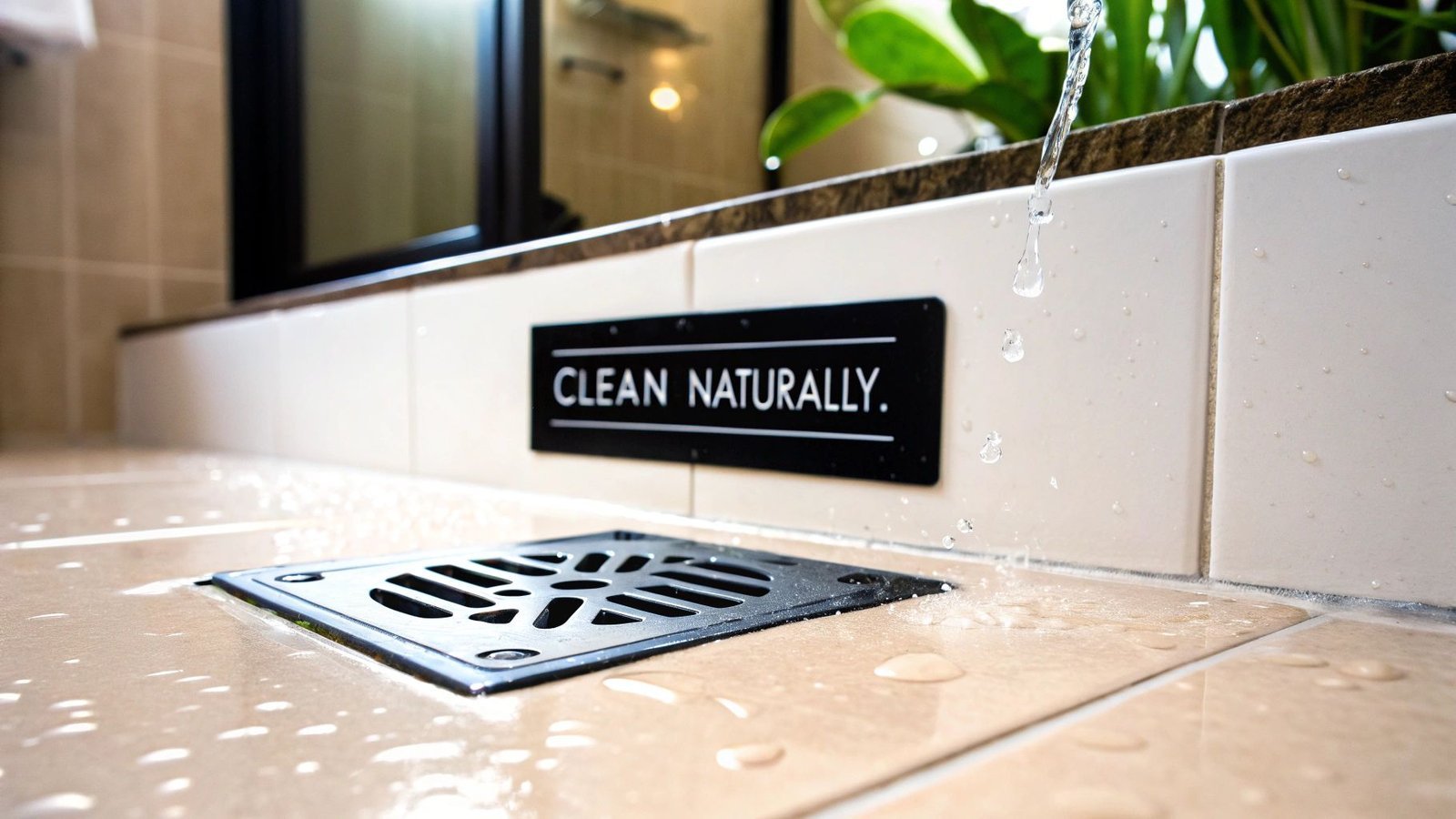


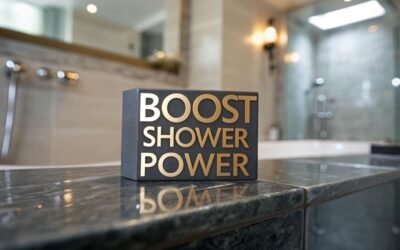
0 Comments